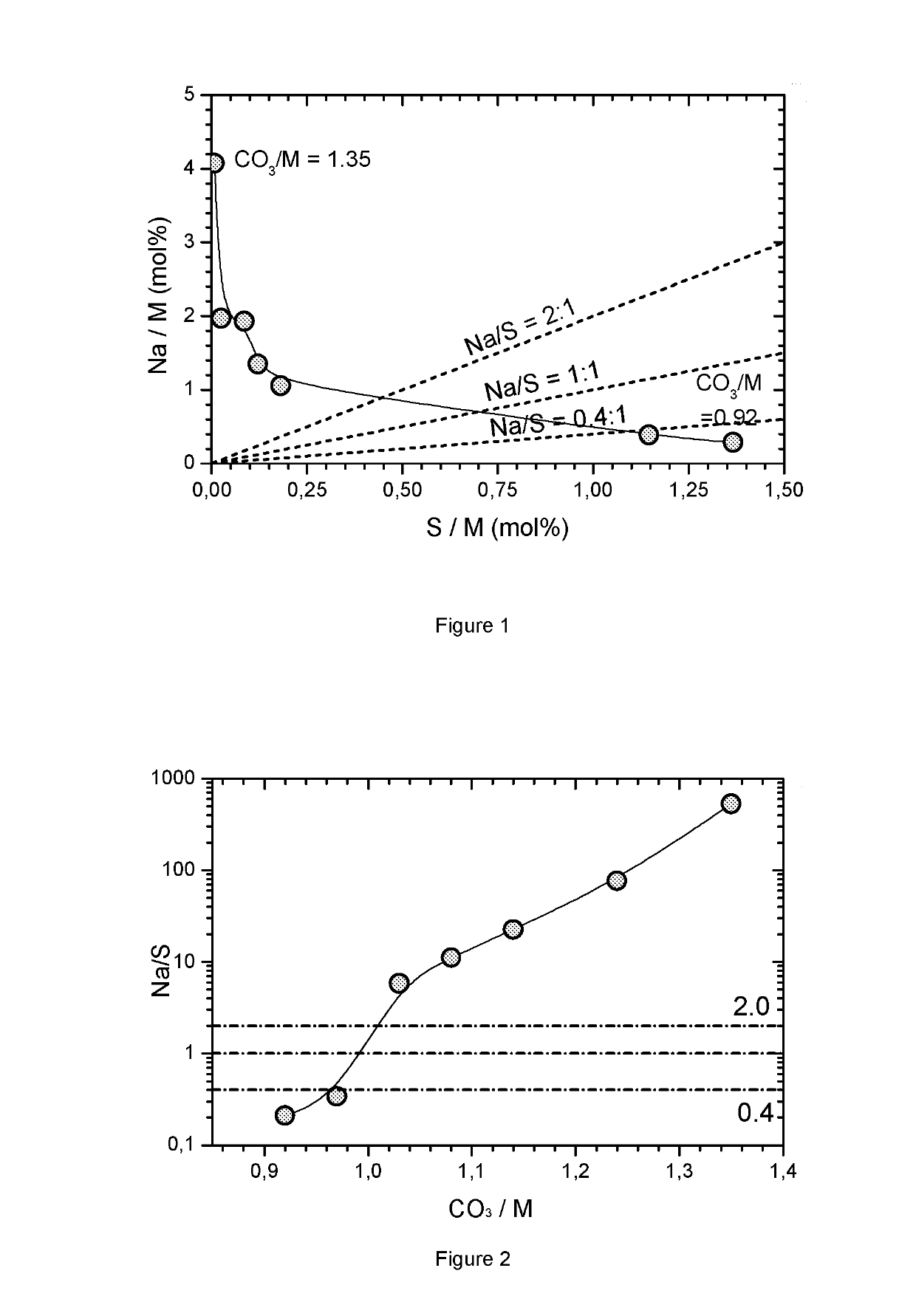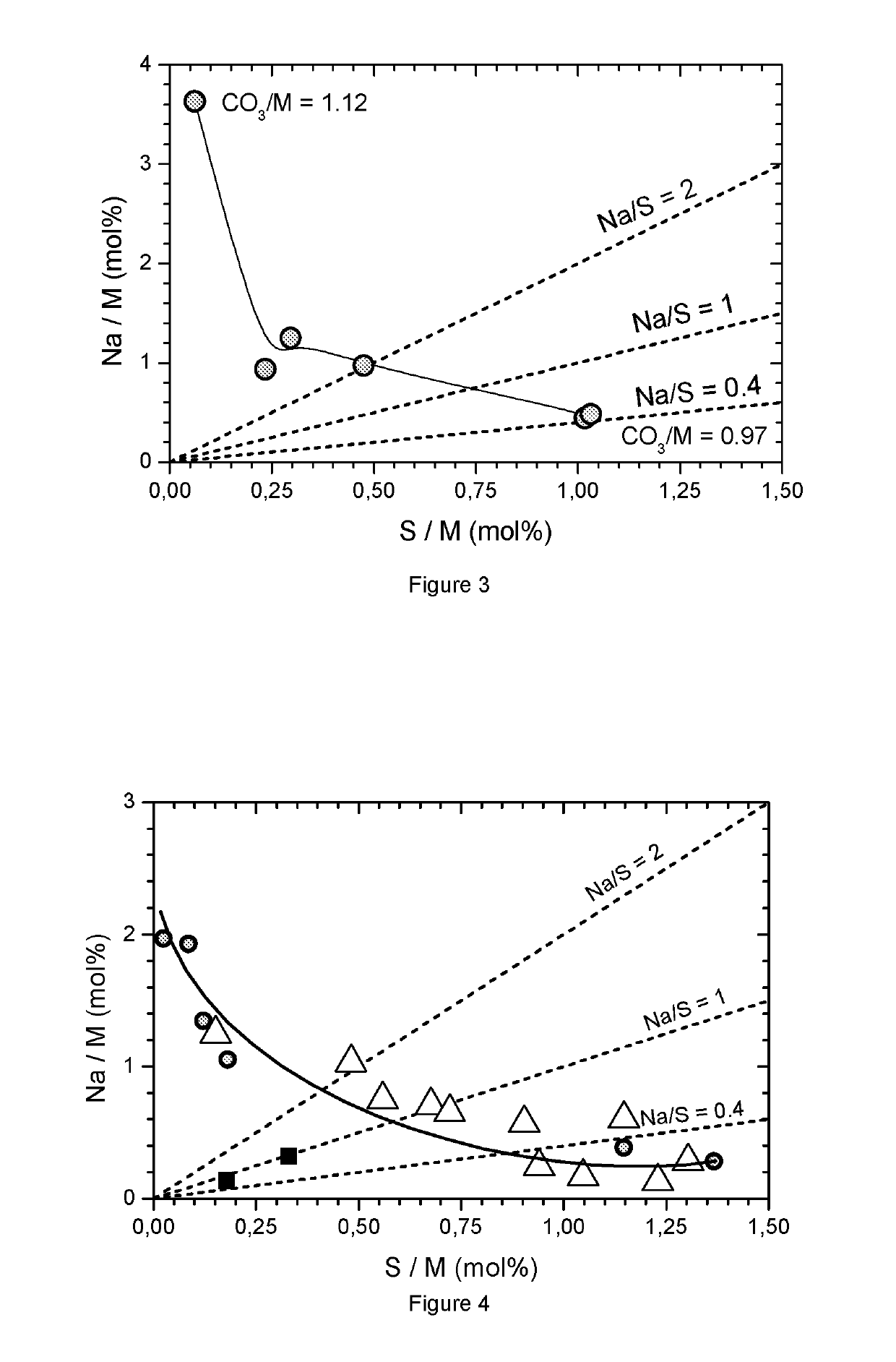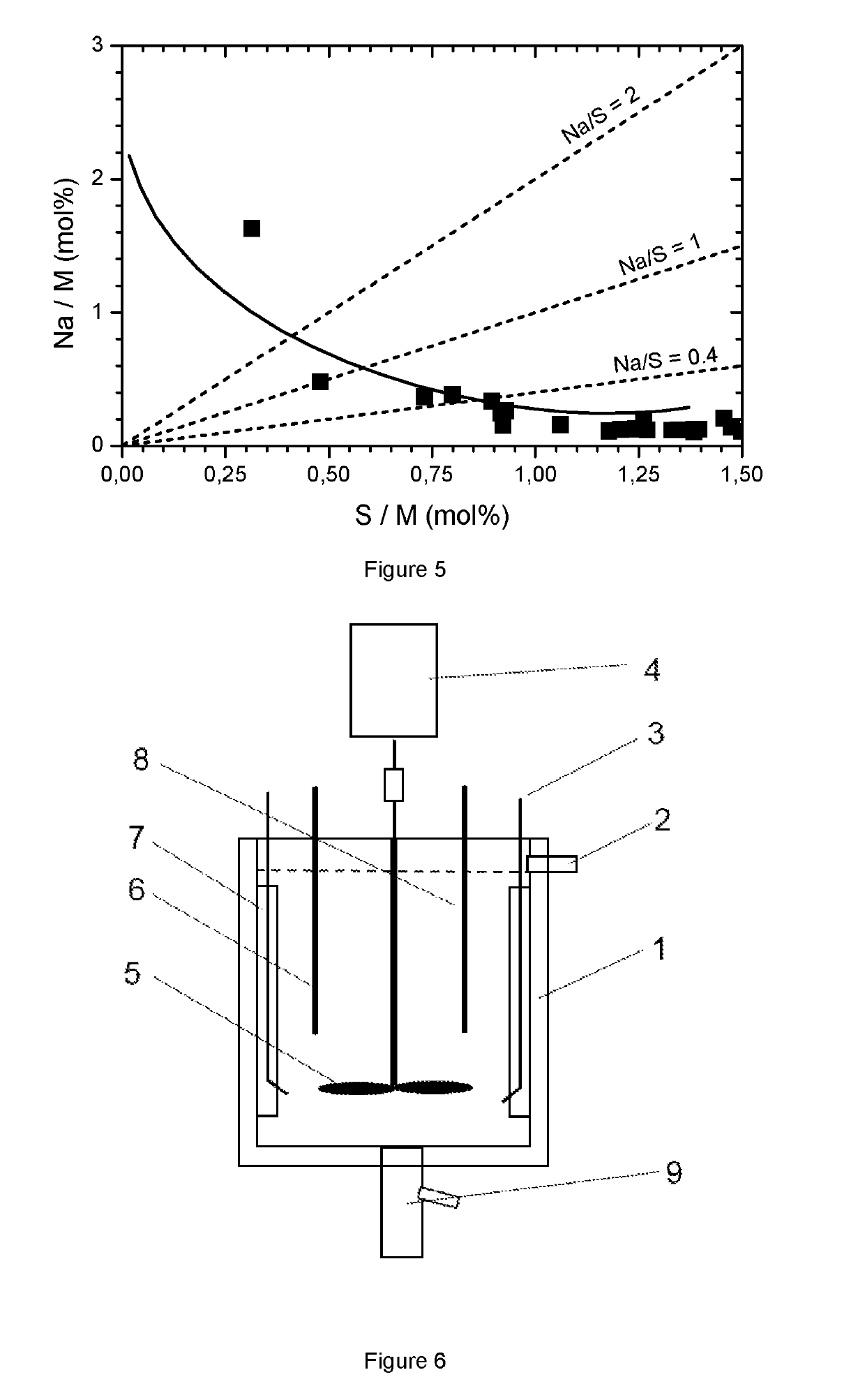Impurity containing cathode material with preferred morphology and method to prepare from impurity containing metal carbonate
a cathode material and impurity technology, applied in the direction of cell components, electrochemical generators, nickel compounds, etc., can solve the problems of poor performance of electrode materials, difficult to prepare a sufficiently dense hydroxide, and inability to prepare nmc from “non-mixed” precursors, etc., to achieve a convenient process of preparation
- Summary
- Abstract
- Description
- Claims
- Application Information
AI Technical Summary
Benefits of technology
Problems solved by technology
Method used
Image
Examples
example 1
tion of a Na and Sulfur Containing Carbonate
[0077]A first series of precipitations with varying acid to base flow rate ratios (7 samples) is performed as follows:
[0078]1) A solution of mixed metal sulfate with M=Ni0.42Mn0.42Co0.16 (552) is prepared. The metal concentration is 2 mol / liter
[0079]2) A solution of Na2CO3 with concentration 2 mol CO3 per liter is prepared
[0080]3) A continuous flow of the metal sulfate and the carbonate solution is fed into a water containing reactor under rigid stirring (1000 rpm). The reactor is kept at 90° C. The total flow rate is chosen to replace the volume of the reactor within 2.8 hours. The molar flow rate ratio of base to acid (CO3 / SO4) is fixed at a value between 0.92 to 1.35. The flow rate is controlled and fixed gravimetrically. The precipitation is carried out for 6 h.
[0081]4) Small test samples are collected after each hour of operation (resulting in samples 1, 2, . . . 6). The particle size of the carbonate precipitate within the slurry is ...
example 2
tion of Na and Sulfur Containing Carbonate with Different Metal Compositions
[0088]The preparation of metal carbonates of Example 1 is repeated with the difference that the metal composition of the mixed sulfate solutions is varied. For some compositions several flow rate ratios are used, in some cases only two flow rate ratios are tested. Generally the precipitation conditions are chosen to be near or within the desired region where the Na / S ratio is between 0.4 to 2. Table 3 summarizes the precipitation conditions as well as the obtained impurities. FIG. 4 shows the results of the ICP analysis for the impurities (∘=Example 1, Δ=M series; ▪=exceptions). Obviously a metal carbonate without impurities cannot be precipitated. In all cases, a sodium and / or sulfur impurity is present. FIG. 4 shows a preferred region where 13 / M) flow rate ratio) have lower impurities. These Ni free compounds are not of interest as a precursor for NMC. The dotted line is a guide for the eye to locate typic...
example 3
of Precipitation Conditions
[0090]In this example the precipitation conditions are varied to investigate possibilities to derivate from the general trend for Na and S impurities as a function of CO3 / M flow ratio. In some cases 10% of the Na2CO3 is replaced by 2NaHCO3 (in this case the Na concentration is fixed at 4 mol / L; the flow rate ratio is defined as 0.5*Na / SO4). In some cases 10% of the Na2CO3 is replaced by NaOH (2 mol NaOH per 1 mol Na2CO3). In some cases the precipitation temperature is changed (to 25° C.), in some cases the concentrations of the reactants are changed, in some cases seeding technology is applied, in some cases the geometry of the reactor is changed, in some cases the residence time is changed. For most experiments a metal composition NMC=552 is used. The conclusion is that generally the MCO3 contains impurities, in no case an impurity free MCO3 is obtained. FIG. 5 summarizes the results.
PUM
| Property | Measurement | Unit |
|---|---|---|
| particle size distribution | aaaaa | aaaaa |
| sizes | aaaaa | aaaaa |
| particle size | aaaaa | aaaaa |
Abstract
Description
Claims
Application Information
 Login to View More
Login to View More - R&D
- Intellectual Property
- Life Sciences
- Materials
- Tech Scout
- Unparalleled Data Quality
- Higher Quality Content
- 60% Fewer Hallucinations
Browse by: Latest US Patents, China's latest patents, Technical Efficacy Thesaurus, Application Domain, Technology Topic, Popular Technical Reports.
© 2025 PatSnap. All rights reserved.Legal|Privacy policy|Modern Slavery Act Transparency Statement|Sitemap|About US| Contact US: help@patsnap.com



